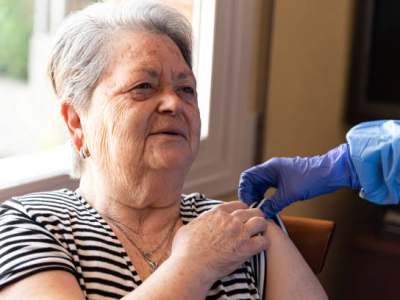May 6, 2011
US flu activity wanes further
Influenza activity in the United States decreased further during the week of Apri 24 to 30, according to the Centers for Disease Control and Prevention (CDC), with the proportion of deaths from pneumonia and flu below the epidemic threshold. Influenza-associated pediatric deaths numbered 3, including 1 associated with pandemic H1N1, 1 with nonsubtyped influeza A, and 1 with influenza B, raising the season total to 100. Regional flu activity was reported in two states (New Hampshire and New York), local activity in seven states and the District of Columbia, and sporadic activity in 33 states and Puerto Rico, the US Virgin Islands, and Guam. Eight states reported no flu activity.
May 6 CDC flu surveillance update
H1N1 findings from Austrian cases
An Austrian study on the clinical aspects of 2009 pandemic H1N1 flu in that country published yesterday showed that elderly and obese patients and those with neurologic disease were at highest risk for severe disease, that pregnancy was not linked to a higher risk for severe disease in the latter part of the pandemic, and that antiviral treatment had little effect on symptoms or survival but did reduce the risk of admission to an intensive care unit (ICU). The prospective, cross-sectional, multicenter study included data from seven hospitals on 540 patients with confirmed pandemic H1N1 flu; 343 patients (63.5%) were hospitalized, with 49 (9.1%) entering the ICU and 14 (4.1%) dying. Patients admitted to the ICU were significantly more likely to present with thoracic pain, fatigue, and chills. Those 65 and older had the highest case-fatality rate (9.1%) and the highest rate of ICU admission. The median patient age was 19.3 years (range, 26 days to 90.8 years). Half of the hospitalizations were in patients under 21; only 5.6% were 65 or older.
May 5 Infection article abstract
Chloroquine a no-show for flu prevention
Although the antimalaria drug chloroquine has shown in-vitro activity against several viruses, including influenza, it does not prevent acquisition of influenza or affect the clinical disease course, according to a study published online yesterday in Lancet Infectious Diseases. The study group comprised 1,496 healthy adults who were randomly assigned to receive choroquine phosphate, 500 mg daily for 1 week and then once a week through week 12, or a placebo. Blood samples were taken at baseline and after 12 weeks; in addition, participants kept a weekly online diary plus a daily diary and self-administered nasal swabs if they became ill. In the treated group, 12 (2%) of 724 had laboratory-confirmed clinical influenza, compared with 8 (1%) of 738 controls (relative risk, 1.53; 95% confidence interval, 0.63-3.72, p=0.376). Adverse events, mostly mild and rarely requiring discontinuation of treatment, occurred in close to half of the treated group and in about one third of the control group. The authors conclude that although chloroquine was relatively well tolerated in this group, it does not effectively prevent influenza infection.
May 5 Lancet Infect Dis article abstract


















